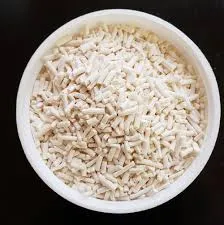
indirect food additives
Indirect Food Additives Understanding Their Role in Food Safety and Quality
In the realm of food production and consumption, the term indirect food additives refers to substances that may not be added directly to food but can still affect its quality and safety through various mechanisms. These substances can leach into food from packaging materials, processing equipment, or the environment, leading to potential exposure for consumers. Understanding the role of indirect food additives is crucial for ensuring food safety and maintaining the quality of the products we consume daily.
Indirect food additives can come from a variety of sources. For example, cooking utensils, storage containers, and food packaging materials often contain substances that may migrate into food. Common materials used in food packaging, such as plastics, metals, and glass, can all potentially release additives into the food they contain, especially when exposed to heat, light, or acidic conditions. Common indirect additives include compounds such as phthalates, bisphenol A (BPA), and various heavy metals.
The health implications of indirect food additives are a significant concern for consumers and regulatory bodies alike. Research has shown that prolonged exposure to certain chemicals can lead to adverse health effects. For instance, BPA, often used in plastic manufacturing, has been linked to hormonal disruptions and other health issues. Similarly, phthalates, which are used to increase the flexibility of plastics, have raised concerns regarding their potential impact on human health, particularly among vulnerable populations such as children and pregnant women.
In response to these concerns, governments and health organizations have established various regulations and guidelines to monitor and control the use of indirect food additives. In the United States, the Food and Drug Administration (FDA) mandates that all substances intended for use in food packaging must be assessed for safety before they can be marketed. This pre-market evaluation considers the potential for leaching and the cumulative exposure to these substances through various food sources.
indirect food additives

Despite regulations, challenges remain in ensuring the safety of indirect food additives. The complexity of food packaging systems—often involving multiple materials and layers—can make it difficult to predict the overall exposure to consumers. Furthermore, as new materials and technologies emerge in the food industry, regulators must continuously adapt their guidelines to address new safety issues related to these additives.
Education plays a crucial role in empowering consumers to make informed decisions regarding their food choices. Awareness of potential indirect food additives can encourage individuals to opt for safer packaging options, such as glass or stainless steel containers, and to be cautious of products that are heated in plastic packaging. Additionally, consumers are encouraged to support brands that prioritize transparency in their supply chains and commit to reducing harmful substances in their products.
To further enhance food safety, researchers are actively exploring alternative materials that are less likely to leach harmful substances. Biodegradable and plant-based packaging options are emerging as promising alternatives to conventional packaging materials, offering the potential for reduced health risks and environmental impact.
In conclusion, indirect food additives play a critical yet often overlooked role in the safety and quality of the food we consume. As awareness of their potential health risks grows, it becomes increasingly important for regulatory bodies, food manufacturers, and consumers to work together. By promoting safer alternatives and encouraging transparency in food production, we can help ensure that food remains not only delicious but also safe for everyone. Understanding the dynamics of indirect food additives is a step toward making healthier choices and fostering a safer food environment.
-
Understanding Synthetic Rubber OptionsNewsApr.27,2025
-
Trichloroisocyanuric Acid: Essential for Clean and Safe WaterNewsApr.27,2025
-
Sodium Dichloroisocyanurate: Key to Safe Water TreatmentNewsApr.27,2025
-
Sodium Acid Pyrophosphate: Essential in Modern Food ProcessingNewsApr.27,2025
-
Essential Water Treatment ChemicalsNewsApr.27,2025
-
Denatured Alcohol and Its Industrial UsesNewsApr.27,2025
-
The Versatile Uses of Sodium BicarbonateNewsApr.24,2025
Hebei Tenger Chemical Technology Co., Ltd. focuses on the chemical industry and is committed to the export service of chemical raw materials.
-

view more DiethanolisopropanolamineIn the ever-growing field of chemical solutions, diethanolisopropanolamine (DEIPA) stands out as a versatile and important compound. Due to its unique chemical structure and properties, DEIPA is of interest to various industries including construction, personal care, and agriculture. -

view more TriisopropanolamineTriisopropanolamine (TIPA) alkanol amine substance, is a kind of alcohol amine compound with amino and alcohol hydroxyl, and because of its molecules contains both amino and hydroxyl. -

view more Tetramethyl Thiuram DisulfideTetramethyl thiuram disulfide, also known as TMTD, is a white to light-yellow powder with a distinct sulfur-like odor. It is soluble in organic solvents such as benzene, acetone, and ethyl acetate, making it highly versatile for use in different formulations. TMTD is known for its excellent vulcanization acceleration properties, which makes it a key ingredient in the production of rubber products. Additionally, it acts as an effective fungicide and bactericide, making it valuable in agricultural applications. Its high purity and stability ensure consistent performance, making it a preferred choice for manufacturers across various industries.











